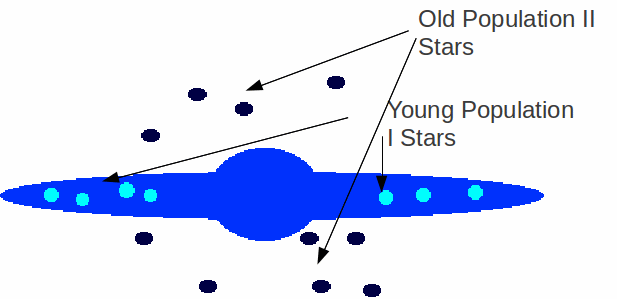There are believed to have been three generations of stars:
Population I stars are young. They include the Sun and tend to be hot and luminous. They are concentrated in the disks of spiral galaxies and are particularly found in the spiral arms. They contain a significant amount of heavy elements.
Population II stars tend to be found in globular clusters and the centres of galaxies. They tend to be older, less luminous and cooler than Population I stars. They have few heavy elements, either because there were few heavy elements around when they formed or because they formed in parts of the Universe poor in heavy elements.
There may also have existed Population III stars. These, if they existed, were the first stars to be formed. They were the most luminous, the heaviest and hottest. They had virtually no heavy elements. They had very short lives, rapidly burning up their fuel and exploding as supernovae, populating the Universe with heavy elements taken up by stars which formed later.
Notice that the youngest stars have the most heavy elements. This is because there were virtually no heavy elements formed in the big bang. Heavy elements are formed primarily in the interiors of stars and during supernovae explosions. Any stars formed after the first generation – population III – stars may contain heavy elements therefore. Because the proportion of heavy elements in a star – it's metallicity - increases with each generation, it may be used as a very rough indication of a stars age.
In the Milky Way, the population I stars are concentrated in the disc, and the population II stars in the halo, far from the disc.

